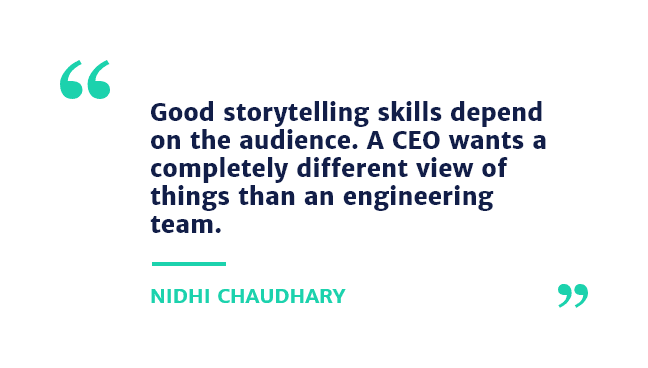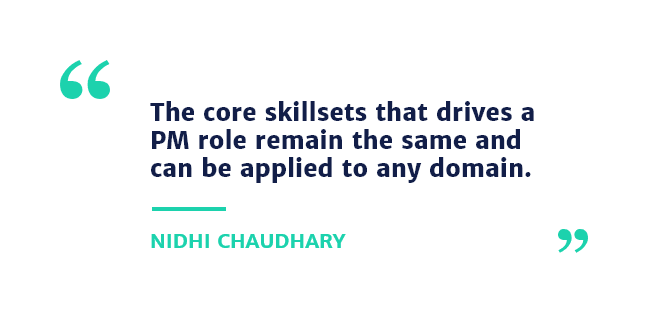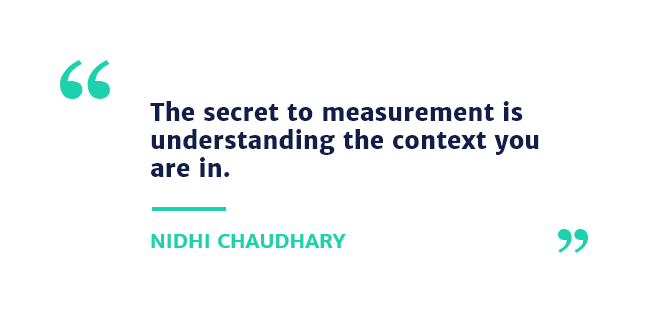Updated: January 24, 2024- 7 min read
This week our #AskMeAnything session welcomed Nidhi Chaudhary, Senior Product Manager at Amazon, to talk about Technical Product Management at Amazon and the different routes for making the PM transition.

Nidhi Chaudhary is a Senior Product Tech Manager at Amazon. She began her career as a Tech Support Executive at Dell, one of the biggest electronic device manufacturers. Within a year she moved to 3i Infotech where she was hired as a Software Engineer.From there, she has held a number of Product Management positions at companies like Verse Innovations, Ola and Amazon. During her 13 years of Product experience, she took part in developing various new products, which have been a great success.Nidhi has also been responsible for hiring and mentoring Product Managers in the past and is quite efficient at it. She also provides a lot of insight into the monetization of an idea and has a healthy experience in prototyping these new ideas.
Transition into Product Management at Amazon
What do you think are the top skills needed to ‘transition’ from an Analyst/Product Owner role to a Product Manager role?
This is a very good question, and I believe impacts a lot of people who are trying to transition from other roles into PM positions. Of course, every case is different and needs to be evaluated based on personal strengths and weaknesses, but if I were to generalize into top skills, these would be an absolute must:
Ability to stand-in for the customer no matter what. Empathize and being able to identify the “right” consumer problem (without jumping into solutions).
Comfort with numbers in order to understand the efficacy of any initiative.
Good storytelling skills depending on the audience. A CEO wants a completely different view of things than an engineering team.
I’m starting as an SDE 1 at Amazon in August. Can I eventually transition to a PM role in Amazon and what can I do to better position myself as a future PM?
Yes, you absolutely can. You just need a sponsor who is willing to hire and groom you into the role you want. For the 2nd part of your question, see my above response.
How did you manage to transition from a Software Engineer role to a Product Manager? How long did this transition period take for you?
Interesting question. For me, the transition was a little seamless as I was kind of spread thin already in my SDE role during the early years of my professional like. I was responsible for a little bit of Account Management with clients, requirements gathering, coding, testing etc. So, the decision to move into PM role only meant a focussed approach on some bits of my earlier work.

What would you suggest to a Masters student (with Software Dev and Support experience) looking to be hired as a Product Manager? I don’t have any Product experience.
I’d suggest to you what I did. Try to get an opportunity internally within your organization. When people have worked with you in “a” role and like you, they are more likely to sponsor you for another role.
I see that you have had PM jobs at different organizations. Were they in the same domain of expertise? Was it easy or difficult, to change domains being a PM?
Thank you for asking this question. This is very important to understand that for a PM, domain experience should not be a bottleneck. The core skillsets that drive a PM role remain the same and can be applied to any domain. Of course, in the short term, this means that you will end up spending extra hours in understanding the domain itself, but that also helps you bring an absolutely fresh perspective to the table.
It seems Amazon hires only PMs with programming experience. Are the opportunities for the more business-focused PMs?
I don’t entirely believe that’s true. There are 2 kinds of roles: PM-Technical and PM. If you are not comfortable with tech, you can apply for PM roles.
How long should one wait before applying for PM interviews at Amazon if the previous interviews didn’t go well?
The wait is usually for 6 months. However, the idea is to spend time improving than just the time aspect of waiting. In my experience, I have seen people taking at least 1-2 years to gain more perspective (unless they tanked the 1st interview due to a bad day or something).

How easy or hard is it to make a transition from Hardware PM to Software PM?
The exact answer would literally depend on the exact profile and circumstances, however, as I said earlier, core PM skills are totally portable and you just need to find a sponsor who is willing to give you that chance.
Which is better when starting a PM career: Looking after a big product for a smaller company versus managing a smaller portion of the product at a major company?
I’d have to lean towards a smaller company – purely because of the amount of learning you get in a short amount of time. As a PM in small company, your street smartness skills will be tested to a level that you didn’t know existed.
What are some of the hardest or most interesting PM interview questions you’ve gotten?
I always struggle with: Where do you see yourselves in 5-10 years? Reason being, with the way technology is advancing, the honest answer is “I dont know” and thats a good thing because that means I’d be working on something that hasnt even been thought of yet.

Product Management at Amazon
How is the entrepreneur culture at Amazon? Can you tell more about the “Do it yourself” approach?
Do it yourself approach totally depends on what the end goal is. If you are trying to launch something off the ground with a tight timeline, DIY may not be the best approach. However, if you are trying to scale an already proven idea and are trying to minimize dependencies, DIY offers a lot of benefits in the long term.
How does Amazon work with operation + product together? How is the roadmap set?
Depending on the role – Ops and Product work hand in hand as partners. Product owns the pen to the roadmap doc, but Ops is a very very (and I can’t stress this enough) important stakeholder.
As a Product Manager at Amazon, how do you get measured against the 14 leadership principles? They sound nice, but fuzzy to measure.
That is true indeed. The secret to measurement is understanding the context you are in. Define what matters the most for your role and have you manager and important stakeholders agree/disagree to that definition. Once you align on the top Leadership Principles that matter for you and your role, life becomes easier as they stand in as the guiding principles.

I’ve heard that companies like Microsoft call Product Management roles as Program Managers… Do you think it’s due to some similarities between the roles?
That is correct. Product manager defines “what” needs to be done and usually is also responsible for “how” part of the delivery. Hence, the overlap with program management roles.
When defining the requirements of a new product or capability, how much emphasis is on understanding ideal use-cases or user-stories and is there a framework your team uses to create them?
A lot of emphasis. This is what we call customer backwards mapping. Ideally, we identify use cases by actors that are involved in the system and the flow of transaction amongst them.We use PRFAQ approach. This answer on quora explains the customer backward approach quite nicely.
Updated: January 24, 2024




